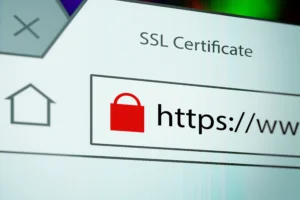Physical Address
304 North Cardinal St.
Dorchester Center, MA 02124
Physical Address
304 North Cardinal St.
Dorchester Center, MA 02124

In 2020, Microsoft Teams went dark worldwide due to a single expired SSL certificate. That same year, Spotify faced a similar outage, leaving thousands of users offline because of a missed SSL renewal. These high-profile outages prove a blunt fact: even the most advanced IT teams can stumble on something as basic as SSL management.
In this blog, we will explore why SSL expiration matters, the real consequences of neglecting it, and the steps IT teams can take to avoid costly outages and bad press. Let’s start with the basics– why SSL expiration is so critical.
SSL certificates matter because they keep websites secure, trusted, and accessible. When a certificate expires, the damage is instant and often costly. Here are the four major reasons that highlight why expiration should never be overlooked.
1. Service downtime: When a certificate expires, browsers block access. Visitors see warnings such as “Your connection is not private.” Most users exit rather than proceed. For a business, this means sudden downtime and frustrated customers.
2. Security risks: Expired SSL certificate weakens encryption and leaves traffic open to attacks. Hackers can exploit it to launch man-in-the-middle attacks. This creates a direct risk to sensitive data and business operations.
3. Compliance issues: Many industries require active SSL certificates to meet data protection standards. Letting one expire can lead to compliance failures, audits, or even penalties. It also damages an organization’s record with regulators.
4. Loss of trust and revenue: Customer trust is hard to build and easy to lose. When users see certificate errors, they question the reliability of the brand. In many cases, they move to competitors. For digital businesses, that’s lost revenue, and it adds up fast.
Aside from these huge financial impacts, failed SSL certificates also have a number of other harmful effects, including disruption to operations, media outcry, and stressed IT staff. For all these reasons, monitoring and updating SSL certificates is very important for organizations.
The CA/Browser Forum indicated that by the year 2029, SSL/TLS certificates will be limited to a 47-day maximum validity period as opposed to the current one-year maximum. While this change increases security by limiting the amount of time hackers can potentially exploit compromised keys, it presents IT teams with a series of challenges including:
Nonetheless, with established renewal policy, automation tools and centralized monitoring, IT teams should be able to work through the challenges.
At the same time, organizations should also plan ahead to buy SSL certificates to maintain uninterrupted security across all systems. It is recommended to get them only from trusted and top SSL certificate providers for guaranteed protection and consistent performance.
So, now that you understand the importance of SSL certificates, let’s look some of the strategies that IT teams can use to manage renewals.
One of the most important methods is that the team can manage SSL certificates efficiently through automation. This allows IT teams to continuously manage renewal and reduce human error. Here are important steps to implement automation effectively:
By following these steps, the IT teams can keep the certificate updated, avoid outages and reduce stress.
Visibility is another essential way to track every certificate and act before issues arise. Without a complete inventory, expired or misconfigured certificates can cause security gaps. Below are some of the key steps that IT teams can apply to improve visibility and control:
Following these steps will help your IT teams clearly watch all certificates, fix issues quickly and avoid service disruption.
The third factor that helps IT teams to maintain security and compliance is governance. It makes sure that renewal practices follow the standards, support the audit, and align with business continuity requirements.
Here are the important steps that teams can take:
These measures will definitely help your IT teams to be organized, meet compliance requirements and keep the system safe without surprise.
In addition to strategies explained before, IT teams can manage SSL certificates more effectively with a structured action plan, which is outlined below.
To manage certificates effectively, start by auditing internal and external SSL certificates, including domain SSL certificates. Use automatic scans to identify the owners and expiration dates. This ensures complete visibility and prevents overlooked certificates.
Set clear policies to renew SSL certificates, including who handles them and how. Specify the lead time to avoid renewal of the final-minute. A defined policy reduces errors and keeps the system running smoothly without disruption.
To automate renewal, use Certificate Lifecycle Management tools and protocols. Automation reduces manual effort, eliminates certificate errors and allows IT teams to focus on important tasks. Make further plans to buy SSL certificates from reliable sources.
First test automatic renewal on high-priority services. Monitor the errors, confirm the smooth execution, and adjust the workflows. Once reliable and consistent in infrastructure, expand automation for all certificates for error-free management.
Regularly check certificate status via dashboard and alerts. Stay compliant with certificate policies and maintain audit logs. Continuous monitoring assures timely renewals and all os systems remain safe.
By following this structured plan IT teams can stay up to date with certificates, maintain compliance and keep their internal systems and customer services secure without any interruptions.
Ignoring the management of the SSL certificate can cause severe problems. Expired SSL certificate can lead to service downtime, security risks, compliance issues, and loss of customer trust. To avoid these issues, IT teams should implement active strategies and structured action plans. They should include automation, visibility, governance and continuous monitoring for better security of their organizations.
Above all, always partner with trusted SSL certificate providers, as they offer certificates with benefits like discounts and warranty protection. They also assist in managing renewals, provide expert guidance, and help maintain uninterrupted security.